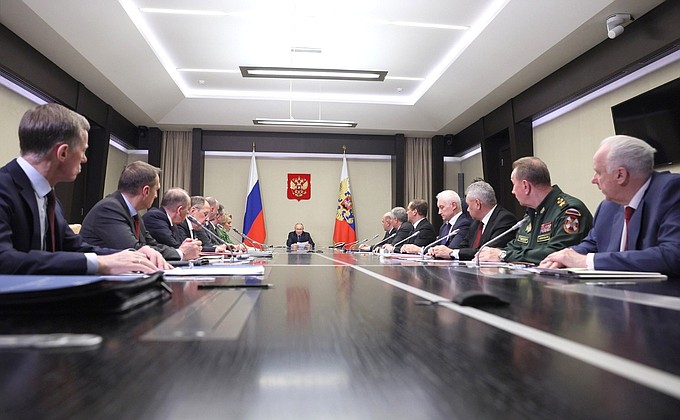
The post Совещание с членами Совета Безопасности, Правительства и руководством силовых ведомств first appeared on The News And Times – thenewsandtimes.com.
Ernest Boyce worked in the Russian mining industry but was recruited by British intelligence and was employed by MI6 during the First World War. In 1918 he was sent to Russia to join up with a small group of agents working under Robert Bruce Lockhart at the British Embassy in Petrograd. The head of MI6, Mansfield Smith-Cumming, wanted Boyce to be a “link man in Moscow, someone who could simultaneously be in contact with both John Scale (based in Stockholm) and the agents working undercover inside the country.” Boyce was described as “a silver-haired lieutenant with considerable experience in military sabotage”. The undercover agents included Francis Cromie, George Alexander Hill, Oswald Rayner, Stephen Alley and Cudbert Thornhill.
Sidney Reilly arrived in Russia in May 1918. As Robin Bruce Lockhart, the author of Reilly: Ace of Spies (1992), points out: “Reilly was eager to reach Moscow as soon as possible and only stayed long enough in Petrograd to make contact with Commander Ernest Boyce, the new head of the British SIS in Russia since the departure of Major Alley. Boyce was mainly concerned with intelligence operations against Germany and Reilly’s was an entirely independent assignment. Reilly made arrangements to use Boyce’s cipher staff in the British Consulate-General in Moscow.”
Felix Dzerzhinsky, the head of Cheka, decided to try and infiltrate this intelligence unit. Jan Buikis, a Soviet agent, made contact with Francis Cromie and requested a meeting with Robert Bruce Lockhart. On 14th August, 1918, Buikis and Colonel Eduard Berzin, met Lockhart. Berzin was the commander of a Lettish battalion in the Kremlin guard and told Lockhart that there was serious disaffection among the Lettish troops and asked for money to finance an anti-Bolshevik coup. Sidney Reilly was brought into the conspiracy and Berzin was given 1,200,000 rubles. This money was handed over to the Bolsheviks.
On 17th August, 1918, Moisei Uritsky, the Commissar for Internal Affairs in the Northern Region, was assassinated by Leonid Kannegisser, a young military cadet. Anatoly Lunacharsky commented: “They killed him. They struck us a truly well-aimed blow. They picked out one of the most gifted and powerful of their enemies, one of the most gifted and powerful champions of the working class.” The Soviet press published allegations that Uritsky had been killed because he was unravelling “the threads of an English conspiracy in Petrograd”.
Two weeks later Dora Kaplan attempted to assassinate Lenin. It was claimed that this was part of the British conspiracy to overthrow the Bolshevik government and orders were issued by Felix Dzerzhinsky, the head of Cheka, to round up the agents based in British Embassy in Petrograd. On 31st August, 1918, Cromie was killed resisting arrest. According to Robin Bruce Lockhart: “The gallant Cromie had resisted to the last; with a Browning in each hand he had killed a commissar and wounded several Cheka thugs, before falling himself riddled with Red bullets. Kicked and trampled on, his body was thrown out of the second floor window.”
Ernest Boyce and Robert Bruce Lockhart were both arrested but Sidney Reilly had a lucky escape. He arranged to meet Cromie that morning. He arrived at the British Embassy soon after Cromie had been killed: “The Embassy door had been battered off its hinges. The Embassy flag had been torn down. The Embassy had been carried by storm.” Reilly now went into hiding and eventually managed to get back to London. Boyce initially was told he was going to be shot but was surprisingly released on 1st September.
Boyce worked as the Passport Control Officer in Tallinn before being appointed as MI6 station chief in Helsinki. The Bolshevik government decided to trick Sidney Reilly and Boris Savinkov into going back to the Soviet Union. As Christopher Andrew, the author of Secret Service: The Making of the British Intelligence Community (1985) has pointed out: “Since 1922 the GPU had been plotting the downfall of both Reilly and Savinkov by operating a bogus anti-Bolshevik Front, the Monarchist Union of Central Russia (MUCR), better known as the Trust, designed to ensnare the remaining plotters against Bolshevik rule.”
Boyce wrote to Sidney Reilly asking him to meet the leaders of Monarchist Union of Central Russia in Moscow. In March 1925, Reilly replied: “Much as I am concerned about my own personal affairs which, as you know, are in a hellish state. I am, at any moment, if I see the right people and prospects of real action, prepared to chuck everything else and devote myself entirely to the Syndicate’s interests. I was fifty-one yesterday and I want to do something worthwhile, while I can.”
After a number of delays caused mainly by Reilly’s debt-ridden business dealings, he met Ernest Boyce in Paris before crossing the Finnish border on 25th September 1925. At a house outside Moscow two days later he had a meeting with the leaders of MUCR, where he was arrested by the secret police. Reilly was told he would be executed because of his attempts to overthrow the Bolshevik government in 1918.
According to the Soviet account of his interrogation, on 13th October 1925, Reilly wrote to Felix Dzerzhinsky, head of Cheka, saying he was ready to cooperate and give full information on the British and American Intelligence Services. Sidney Reilly’s appeal failed and he was executed on 5th November 1925.
According to Keith Jeffery, the author of MI6: The History of the Secret Intelligence Service (2010), Boyce had sent Reilly into Russia without clearing the scheme with his superiors in London. “Boyce had to take some of the blame for the tragedy. Back in London, as recalled by Harry Carr, his assistant in Helsinki” he was “carpeted by the Chief for the role he had played in this unfortunate affair.”
In 1938 Alexander Orlov, a senior figure in Cheka, fled to France. He later moved to the United States. FBI agent Edward P. Gazur, who interviewed Orlov, claims that Boyce was a double agent and was paid for information about British agents and was responsible for betraying Sidney Reilly. This was published for the first time in Gazur’s book, Alexander Orlov: The FBI’s KGB General (2001). Nigel West has argued that “the reason why this hasn’t come out until now is that Orlov, who was not debriefed by British intelligence, never told anybody but Edward Gazur.”
Sidney Reilly was still in Petrograd when events turned sour. His plan to overthrow the Bolshevik Government had spun wildly out of control and he knew he would need his wits about him if he was to keep one step ahead of the Cheka.
He first realised that something was seriously awry when Captain Cromie, naval attaché at the British Embassy, failed to turn up to a secret rendezvous on the afternoon of 31 August. “Not like Cromie to be unpunctual,” observed Reilly.
After waiting for another fifteen minutes at the pre-agreed location, he decided to make his way towards the embassy. It was “a dangerous move” – for he risked being searched – “but I had brought it off successfully before.”
He turned into Vlademirovsky Prospect, only to be confronted by a group of men and women running towards him in panic. “They dived into doorways, into side-streets everywhere.”
Reilly was perplexed as to what was happening. A military car sped past, filled with Red Army soldiers. It was heading in the opposite direction to the crowd, racing towards the embassy. Reilly quickened his pace as he reached the end of Vlademirovsky Prospect. As he turned the corner, he immediately realised that something was seriously wrong.
“The Embassy door had been battered off its hinges. The Embassy flag had been torn down. The Embassy had been carried by storm.”
On the pavement outside there were several bloodstained corpses. Reilly glanced at them and noticed that they were not English. They were Russians, Bolsheviks, who he presumed to have been killed while storming the building.
It was to be some hours before Reilly discovered the grim details of what had taken place. Others had been rather closer to the action. Nathalie Bucknell, wife of one of the few remaining staff at the embassy, was in the passport office on the ground floor when she heard the crack of gunshots coming from upstairs. It was exactly 4.50 p.m. She poked her head into the entrance hall, only to hear more intense shooting and “terrible screams”. She was as frightened as she was puzzled; she had not heard any soldiers entering the building.
The embassy porter crept into the hall and peered nervously up the stairwell. He motioned for her to take cover. She did so just in time. As she crouched in the small lobby adjoining the hall, a group of men could be heard careering down the grandiose staircase. At its head was Captain Cromie, wildly firing his revolver. Behind him, and in hot pursuit, were Red Guards. They too were firing their guns.
Nathalie sank to her knees in fear. There was a constant crackle of gunfire as the shoot-out intensified and bullets began to ricochet off the marble walls and columns. She peeked through the keyhole just as one of the bullets hit its target. “Captain Cromie fell backwards on the last step.”
He was seriously wounded and clearly in need of urgent medical attention.
The Red Guards dashed into the street, seemingly confused by the lack of other gunmen. As they did so, a second group of soldiers came clattering down the stairs, equally dazed by the shoot-out. One of them paused for a moment to kick Cromie’s half-conscious body….
Nathalie could hear the sound of yet more soldiers on the first floor of the building; they were bawling to the embassy staff who had hid themselves away in fear of their lives. “Come out of the room, come out of the room, or we will open machine-gun fire on you.”
Nathalie was joined by her friend Miss Blumberg, who had taken refuge in one of the downstairs rooms. Together, the two women gingerly stepped into the hall in order to see what they could do for Captain Cromie. He was smeared with blood. “Bending over him, we saw his eyelids and lips move very faintly.”
As Miss Blumberg attempted to speak to him, a group of Red Guards reappeared and started shouting insults.
Pointing their revolvers at her, they called very rudely: “Come upstairs immediately or we will fire at you.”
The two women did not dare to argue; they were led up to the first floor with revolvers poking into their bodies. Nathalie saw graphic evidence of the shoot-out that had taken place. On the floor, lying in a pool of rapidly congealing blood, was the corpse of a Red Guard.
The two ladies were jostled into the Chancery room where Ernest Boyce, head of Mansfield Cumming’s operations inside Russia, was being held at gunpoint. “At that moment, the Red Commissary entered and told everyone that they must keep quiet with their hands up and that the Consulate was taken by the Red Guards.”
Miss Blumberg bravely asked if she could give the dying Cromie a glass of water. Her request was brusquely denied by the soldiers. The chaplain was treated with equal contempt when he asked to attend to the semi-conscious English captain.
The rest of the British staff were now brought into the Chancery and told that they were being held as prisoners. Most were still reeling from what had taken place. They knew of the assassination of Uritsky and of the attempt on Lenin’s life, but only Ernest Boyce was aware of Reilly’s planned coup and even he did not know that it had been exposed by the Cheka.
“The room was now full of soldiers and sailors who were most brutal in their behaviour,” wrote Nathalie. The porter was led through each room with a revolver pressed to his head. The guards said they would shoot him if he did not unlock every door and cupboard.
The hostages were held for several hours while the embassy was stripped of everything of value, including all its archives and secret documents. The staff were then marched down the stairs, passing the now-dead Captain Cromie, and taken to a nearby building. For the next fifteen hours, they were held prisoner and interrogated, one by one.
Nathalie overheard a soldier saying that five of them, including Boyce, were going to be shot. But the executions were inexplicably annuled before they could be carried out. At 11 a.m. on 1 September, all of the prisoners were informed that they were free to go. Bewildered as to why they were being released, but not daring to ask any questions, they gratefully made their way into the street.
We and our partners use cookies to Store and/or access information on a device. We and our partners use data for Personalised ads and content, ad and content measurement, audience insights and product development. An example of data being processed may be a unique identifier stored in a cookie. Some of our partners may process your data as a part of their legitimate business interest without asking for consent. To view the purposes they believe they have legitimate interest for, or to object to this data processing use the vendor list link below. The consent submitted will only be used for data processing originating from this website. If you would like to change your settings or withdraw consent at any time, the link to do so is in our privacy policy accessible from our home page..
Continue with Recommended Cookies
The post Ernest Boyce first appeared on The News And Times – thenewsandtimes.com.
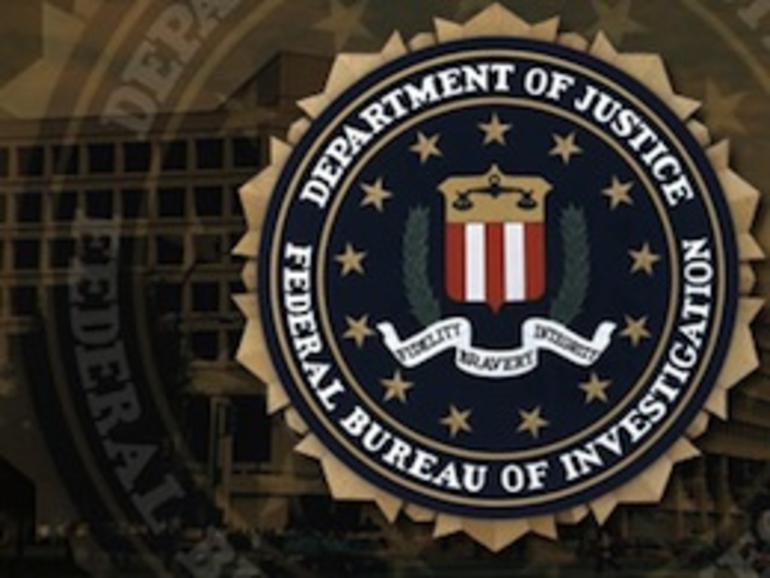
Jordan Dave Persad (20), from Orlando, Florida, was sentenced to 30 months in prison for SIM Swapping conspiracy, followed by three years of supervised release. He pleaded guilty to Conspiracy to Commit Computer Fraud.
United States District Judge Diane J. Humetewa also ordered Persad to pay $945,833 in restitution.
Persad was also ordered to pay $945,833 in restitution. Persad pleaded guilty to Conspiracy to Commit Computer Fraud.
The man was sentenced for his role in a hacking scheme that led to the theft of approximately $1M worth of cryptocurrency from dozens of victims. Persad and his co-conspirators hacked the email accounts of the victims, hijacked their cell phone numbers, and took over their online cryptocurrency accounts.
“Between March 2021 and September 2022, Persad and his co-conspirators hacked into victims’ email accounts, hijacked their cell phone numbers, and gained unauthorized access to their online cryptocurrency accounts. As a result of this scheme, often referred to as “SIM swapping,” Persad and his co-conspirators stole close to $1 million worth of cryptocurrency from dozens of victims, including approximately $30,000 from a victim in Arizona.” reads the press release published by DoJ. “Defendant and his co-conspirators then divided these stolen funds amongst themselves, with Persad keeping around $475,000. Investigators were able to recover some of these funds when they executed search warrants at Persad’s Orlando home.”
In June 2023, Joseph James O’Connor, aka PlugwalkJoe (24), the hacker who was involved in the attacks on Twitter in 2020, was sentenced to five years in prison for cybercrime offenses.
On November 2021, the US Department of Justice indicted Joseph James O’Connor for stealing $784,000 worth of cryptocurrency using SIM swap attacks.
Crooks conduct SIM swapping attacks to take control of victims’ phone numbers tricking the mobile operator employees into porting them to SIMs under the control of the fraudsters. Once hijacked a SIM, the attackers can steal money, cryptocurrencies and personal information, including contacts synced with online accounts. The criminals could hijack social media accounts and bypass 2FA services based on SMS used by online services, including financial ones.
According to the indictment, O’Connor and co-conspirators used SIM swaps to gain access to accounts of a Manhattan-based cryptocurrency company.
The group stole approximately 770.784869 Bitcoin cash, approximately 6,363.490509 Litecoin, approximately 407.396074 Ethereum, and approximately 7.456728 Bitcoin.
Follow me on Twitter: @securityaffairs and Facebook and Mastodon
(SecurityAffairs – hacking, SIM Swapping)
The post Florida man sentenced to prison for SIM Swapping conspiracy that led to theft of $1M in cryptocurrency appeared first on Security Affairs.
The post Florida man sentenced to prison for SIM Swapping conspiracy that led to theft of $1M in cryptocurrency first appeared on The News And Times – thenewsandtimes.com.

The FBI, New York’s counterterrorism unit, Gov. Kathy Hochul and other authorities vowed Monday to hunt down and prosecute whoever posted graphic threats citing Hamas and targeting Cornell University’s Jewish students.
“If you’re going to engage in these harmful actions, hate crimes, breaking our laws, you will be caught and you will be prosecuted to the fullest extent of the law,” Hochul said Monday morning after traveling to the Cornell campus in Ithaca, New York, 165 miles from the state capital in Albany.
The threats were posted Saturday and Sunday on Greekrank, a review site for fraternities and sororities. While many students and parents say they’re trying not to panic, some Jewish undergraduates said they’re afraid to be in their dorms, sororities and fraternities. One group of parents is even trying to hire private security because campus police can’t guard every Jewish space on campus.
Sarah Ruane, a spokesperson for the FBI in Albany, New York, located 165 miles from Ithaca but the nearest FBI office to Cornell, said the agency was “working closely with Cornell and our law enforcement partners at every level to determine the credibility, share information, and take appropriate investigative action.”
Rabbi Ari Weiss, who runs the campus Hillel, said there was “increased security at all Jewish spaces at Cornell” and that the state police counterterrorism unit was also monitoring the situation.
News of the threats shattered the calm and fun of a late fall weekend on the bucolic campus in Western New York, a four-hour drive from New York City. Many students’ families had been up visiting Saturday and Sunday for parents’ weekend, enjoying the colorful autumn leaves, Halloween celebrations and a free bagel brunch hosted by Hillel Sunday morning.
Then, as parents drove home Sunday evening and students geared up for the week ahead, came news of the threats.
One post was titled, “eliminate jewish living from cornell campus,” while another threatened to “shoot up 104 west,” a reference to Cornell’s kosher dining hall. The graphic messages also echoed real atrocities carried out by Hamas on Oct. 7 in Israel. “If i see a pig male jew i will stab you and slit your throat,” read one, with another stating: “i will bring an assault rifle to campus and shoot all you pig jews,” and a third threatening, “If i see another pig female jew i will drag you away and rape you and throw you off a cliff. if i see another pig baby jew i will behead you in front of your parents.”
Reaction from students was captured in the texts they sent to parents and friends after hearing the news.
“That’s the most terrifying thing I’ve ever read,” wrote one.
“I hope it’s not real,” wrote another.
A third wrote in a campus group chat that they were “nervous to go to my hebrew class tomorrow.”
Lauren Wein Mank was among the parents who’d come up to campus for the weekend. She said her daughter has felt “safe and OK” at Cornell until now, but “when she read the actual posts, she was understandably extremely shaken. I just said, ‘Listen, we were just there, everything was really good. I don’t want you to put your head in the sand, but I don’t want you to live in fear. Just be aware, and be mindful.’”
Traci Friedman, a Cornell alumna whose daughter lives in a Jewish sorority, was scrambling Monday with other parents to hire round-the-clock private security for the off-campus house.
“They’re terrified to leave the house or be in the house,” she said. “When I called Cornell police last night, they said they don’t have enough resources to post someone full-time. So we’re trying to hire our own security.”
Cornell President Martha Pollack joined the governor in vowing to find and punish whoever made the threats, saying in one of several statements issued Monday: “The virulence and destructiveness of antisemitism is real and deeply impacting our Jewish students, faculty and staff, as well as the entire Cornell community. This cannot be what defines us at Cornell.”
But Friedman said she was angry that Pollack “was being hailed as a hero by the media” because she felt little has been done until now about other antisemitic incidents on campus, including antisemitic graffiti and a professor, Russell Rickford, who took a leave of absence after publicly saying that he found the Oct. 7 Hamas attacks on Israel “exhilarating” and “energizing.”
“My daughter’s dream, her entire life, was to go to Cornell, but it’s been such an upsetting experience,” Friedman said. But she added that the parents are probably “more upset than the students. I think it’s just that the general feeling of college students is invincibility, and in general, Cornell feels sort of remote.”
With more than 15,000 undergraduates, Cornell is the largest of the Ivy League schools, and it also has the most Jewish students — 2,500, according to the campus Hillel. With reduced tuition for New York residents at Cornell’s four state colleges, Cornell also draws heavily from New York’s large Jewish population.
The campus in Ithaca — located 220 miles from New York City in Western New York’s scenic Finger Lakes region, in a town with a non-student population of just 30,000 — also feels much more isolated than other Ivies like Columbia in Manhattan, Penn in Philadelphia, Yale in gritty New Haven, and Harvard, just across the river from Boston.
A parent who asked that her name be withheld, citing privacy concerns, said it was “surreal” to learn about the threats after parents’ weekend. “The campus was focused on celebrating Halloween,” she said. The statue of the university’s founder, Ezra Cornell, had a pumpkin on its head, kids were walking around in costumes and celebrating back-to-back victories by the men’s and women’s hockey teams, and “parents were walking around in all their Cornell gear.”
That lighthearted mood changed overnight. “Students are terrified, really, really scared,” said Zoe Bernstein, student president of Cornellians for Israel. “We’re at a loss for what to do and how to proceed. Nobody knows anything about these threats, how credible they are. There’s a lot of confusion and a lot of fear.”
Sofia Rubinson, managing editor of The Cornell Daily Sun, said many of the Jewish students she spoke to said that if the purpose of the hate speech was to instill fear, they wanted to show they could rise above that and “keep to their daily routines and attend class.”
A parent with two children at Cornell, who spoke on condition of anonymity out of privacy concerns, said her children were defiant. One called the person behind the posts “a loser.” The other said, “Some troll got in there and posted some crap.”
“They’re not concerned,” the parent said. “But I worry, how does this affect their identity as Jews?”
Molly Goldstein, president of Cornell’s Center for Jewish Living, a dormitory adjacent to the kosher cafeteria, said that after the social media posts started circulating in a group chat for Jewish students, some of the building’s residents, fearing for their safety, tried to find housing elsewhere in Ithaca so they wouldn’t have to sleep there. While it’s unknown whether one or more individuals were behind the threats, she said, “it only takes one person to terrorize an entire group of people.”
Rabbi Weiss, from the campus Hillel, said the last few weeks have “made it so hard for these students,” between anti-Israel rallies, graffiti and the incident with the professor who ended up going on leave. “And then they see these things, these posts on a Sunday afternoon, and I think it shook a lot of students to their core.”
He added: “They are now fearful for their safety. And this is a trend around the country. This isn’t just at Cornell.”
Wein Mank said that in addition to a child at Cornell, she has two younger children in Jewish day school, as well as family in Israel who are “in bomb shelters, their kids are on the front lines.” So she’s well aware of the very real threats to Jews here and elsewhere, and she doesn’t want to sensationalize what’s happening in Ithaca.
But “it’s hard to find the signal in the noise,” she said. She posted pictures on Instagram of parents’ weekend showing Cornell in all its “autumn glory” but wonders, “Which is the illusion?” The fear that someone’s out to get you, or defiantly going about your business?
“I don’t know,” she said. “This is the definition of terrorism. It makes you doubt your experience.”
Forward staffers Jacob Kornbluh, Louis Keene and Odeya Rosenband contributed to this story.
The post Cornell’s idyllic campus shaken by graphic threats against Jewish students appeared first on The Forward.
The post Cornell’s idyllic campus shaken by graphic threats against Jewish students first appeared on The News And Times – thenewsandtimes.com.

In hushed tones, friends and family have been asking me whether our war with Hamas could spin out of control. Could Israel find itself in the eye of a far more cataclysmic conflict? Could the U.S. be dragged into this morass, possibly along with other powers? “Are we on the verge of World War III?” they ask.
My response is that the dangers of escalation are real, but can be mitigated by an unequivocal American commitment to deter Iran and Hezbollah. The world watches the U.S.-Israel alliance, I explain, and regards it as a barometer of American power. A global conflict is avoidable if the United States continues to stand steadfastly alongside Israel, the cornerstone of Middle East stability.
That was the conclusion of my 2019 article The Atlantic titled, “The Coming Middle East Conflagration.” I predicted that a single spark — back then, an Israeli attack on Iranian assets in Syria — could ignite a wildfire that swiftly consumed the region. Much of the world might soon became engulfed.
Prophecy being an inexact vocation, there was much I got wrong. Though war indeed erupted, its spark came not from Syria but from Gaza — a sideshow in my 2019 scenario —and my assumption of Israel’s military readiness proved tragically inaccurate. More prescient, though, was my prognosis that Iran, emboldened by American isolationism and Israel’s political instability, would precipitate a conflict. And I still believe the U.S. and other powers could be dragged into the fray.
In fact, the U.S. is already in the fray. To augment Israel’s defense and deter Hezbollah and Iran, President Joe Biden has dispatched a veritable armada to the Eastern Mediterranean and Persian Gulf.
Escorted by four cruisers, six destroyers, and an undisclosed number of submarines are the U.S. Navy’s newest aircraft carriers, the Ford and the Eisenhower, each bristling with as many as 90 fighter aircraft. Also on board are an array of sea-to-air and sea-to-ground missiles, and thousands of U.S. Marines. The Pentagon has issued “prepare-to-deploy” orders to units positioned outside the Middle East, and activated anti-missile batteries throughout the region.
Not since the wars in Iraq and Afghanistan has the U.S. undertaken so large a military build-up. “No one should take advantage of this moment to escalate, to further attacks on Israel,” Secretary of State Anthony Blinken warned, “or, for that matter, attacks on us and our personnel.”
The sheer magnitude of this force puts pressure on the Biden Administration to act if the intended deterrence fails. It is as though the president has drawn a very big pistol; hesitating to shoot it in the face of brazen provocations would send a dangerous signal of fragility to the world.
Still, Israeli journalists keep asking me “Will Biden pull the trigger?” Here, too, my response is, “Yes.”
In fact, the trigger has already been pulled. The downing by the USS Carney on Oct. 19 of three Israel-bound rockets and many drones fired by Iranian-backed forces in Yemen signified the opening shots. The U.S. is officially engaged.
But further engagement is certainly not America’s goal. On the contrary, news organizations in Israel and the U.S. have reported that the White House is pressuring Israel both to refrain from launching a preemptive strike against Hezbollah and to delay the Israel Defense Forces full-scale ground operation in Gaza. In Syria and Iraq, meanwhile, pro-Iranian militias have fired drones and rockets at U.S. military bases and called on their personnel to evacuate.
The U.S. response so far has been measured, but Secretary Blinken has warned: “We expect there is a likelihood of escalation.”
How, then, might what is still a localized conflict between Israel and Hamas mushroom into a regional or ultimately a global war?
One possible scenario would be triggered by Israel expanding its ground invasion of Gaza. With its international legitimacy eroded, its soldiers exhausted from long days and nights of brutal fighting, and its ammunition stores strained, Israel would present an attractive target to Hezbollah in Lebanon.
A Shiite terrorist organization operated by Iran, Hezbollah would be loath to let Sunni Hamas take all the credit for singularly battling the Zionist enemy. Hezbollah’s arsenal of 150,000 rockets — most of them far bigger, longer range, and more accurate than those fired from Gaza — has not been built for show. If Iran gives the green light, the IDF estimates that Hezbollah could unleash 4,000 rockets per day, overwhelming Israel’s missile defense systems.
The tactical danger of Hamas would quickly be surpassed by the strategic threat of Hezbollah. The United States would have to step in.
That intervention would be strictly defensive —shooting down Hezbollah rockets and drones. But U.S. bases throughout the region, along with the Navy strike force at sea, would be exposed — and possibly targeted. One major attack claiming U.S. casualties could then elicit a large-scale military response against Hezbollah as well as its Iranian masters. Washington and Tehran would find themselves in a de facto state of war.
That battle would confined to the Middle East. But Russian could then take advantage of Washington’s preoccupation with Iran and Hezbollah to mount a major counter-offensive in Ukraine. The Chinese might also seize the opportunity to launch their long-anticipated invasion of Taiwan.
Many of the deconfliction tools available during the Cold War — the famed Hot Line between the White House and the Kremlin, for example — no longer exist. Few are the means for preventing or even decelerating an escalation of international, and potentially catastrophic, dimensions.
I am not, in fact, a prophet, and nothing in this scenario is inevitable. Many steps can be taken to contain the conflict and avert an apocalyptic outcome. As I wrote four years ago in that Atlantic article, and as I assure my family and friends today, Washington can greatly reduce the chances for escalation by making the goals of its Middle East mission crystal-clear.
The Biden Administration must detail the measures it is willing to take should Hezbollah and Iran attempt to open a second front. The Russians and the Chinese must be put on notice that the United States will not be distracted by the current crisis.
Above all, the White House must continue to demonstrate its unconditional support for Israel as this war progresses, regardless of the difficulties that undoubtedly lie ahead. Sticking with Israel sends an incontrovertible message to the world of American resolve. That is the message that President Biden has sent and our common enemies — America’s and Israel’s — are listening.
The post How the Israel-Hamas war could spiral into a global conflagration — with the U.S. deeply engaged appeared first on The Forward.
The post How the Israel-Hamas war could spiral into a global conflagration — with the U.S. deeply engaged first appeared on The News And Times – thenewsandtimes.com.
WASHINGTON (Reuters) -Google CEO Sundar Pichai on Monday acknowledged the importance of making its search engine the default in keeping users loyal — a key point in a once-in-a generation U.S. antitrust fight focused on billions of dollars Google paid to be the default on laptops and smartphones.
Google, which started paying for default status on devices in 2005, monitored for compliance. At one point, the company expressed concern to Apple that its Safari browser would send particular queries, especially lucrative ones, to companies like Amazon.com.
“We were obviously doing the deal for default placement,” said Pichai.
Under cross-examination, Pichai said of Google’s tens of billions in annual payments for default status: “We definitely see value.”
The U.S. government brought the case over whether Google acted illegally to maintain its dominance of online search and parts of search advertising. If the government wins, the company may be forced to scrap some business practices that have helped it stay on top.
In testimony Monday morning, Pichai, who was called by Google, was shown instances when the company pressed Apple, wireless companies and smartphone makers to make its search engine the default on their devices in exchange for revenue-sharing agreements.
“We pay for preload exclusivity on a device-by-device basis,” Pichai said under questioning by the Justice Department.
A lawyer for the Justice Department asked Pichai about a 2007 discussion among Google executives including Pichai, before he became chief executive, about an Apple request to let users choose their search engine on a new version of its Safari browser.
A document at the time said 75% of people do not change defaults and noted: “Defaults have strong impact.”
Pichai also took a couple of swipes at rival Microsoft’s browser, Internet Explorer.
“The browser market at the time had kind of stagnated,” Pichai said of the period before Google launched its Chrome browser, which competes with the Microsoft product.
“They (Microsoft) were not that incented to improve the browser,” he added, calling Chrome a “pretty dramatic improvement” when it launched in 2008.
Google’s strength in search makes it a heavy hitter in the lucrative advertising market, its biggest revenue source.
Google has argued that if people are dissatisfied with default search engines, they can and do switch to another search provider. It has also argued the revenue-share agreements are legal and it has invested heavily to keep its search and advertising businesses competitive.
In cross-examination, the Justice Department pressed Pichai about allegations that Google executives marked sensitive documents as covered by attorney-client privilege when they were not and routinely deleted instant messages without determining if they should be saved as part of litigation.
“This is not an area I was focused on,” Pichai said.
The post Google CEO acknowledges importance of being default search engine in US trial first appeared on The News And Times – thenewsandtimes.com.
Armoured Israeli forces attacked Gaza’s key northern city from two directions on Monday and targeted the main road linking it to the south of the enclave, witnesses said, widening an offensive that led to more international appeals for Gaza civilians to be protected.
Israel’s military said it had struck more than 600 militant targets over the past few days as it expanded ground operations in the Gaza Strip, where Palestinian civilians are in dire need of fuel, food and clean water as the war enters its fourth week.
Only a few dozen humanitarian aid trucks have reached the besieged enclave of 2.3 million people since the Israel-Hamas war erupted three weeks ago, and civil order has broken down with people storming U.N. warehouses in search of food.
That has put four U.N. aid distribution centres and a storage facility out of action, the United Nations agency for Palestinian refugees (UNRWA) said on Monday.
“It’s a disaster on top of a disaster. Health needs are soaring and our ability to meet those needs is rapidly declining,” World Health Organization regional emergencies chief Rick Brennan told Reuters, reiterating international calls for a ceasefire to enable a larger humanitarian operation.
Israel renewed warnings for civilians to move from the north of Gaza to the south as it began an advance late on Friday to pursue Hamas militants it says are hiding in a labyrinth of tunnels under Gaza City.
Many Palestinians have stayed put for fear of becoming homeless like previous generations, and over alarm about Israeli aerial strikes further south.
Fadi, who lives in the Jabalia refugee camp on Gaza City’s northern outskirts and declined to give his last name, said the area was now in mortal danger from Israel’s ground offensive with tanks rumbling on its fringes. But he vowed not to flee.
“No one in the entire neighbourhood has left. We are staying,” he told Reuters by phone. “Whether tanks or planes, there will not be another displacement (of Palestinians). That is our decision even if that will mean our martyrdom (death).”
Islamist militants said they had repelled an attempted thrust by Israeli tanks into Gaza City from the east and were fighting them along the border with Israel in north Gaza.
“Our duty today is fight and fight,” the Islamic Jihad militant group, fighting alongside Gaza’s ruling Hamas, said in a statement, adding that now was not the time for a ceasefire.
The Israeli military said it had killed four prominent Hamas operatives. “IDF troops killed dozens of terrorists who barricaded themselves in buildings and tunnels, and attempted to attack the troops,” it said in an update.
Neither side commented on the other’s reports.
Medical authorities in Gaza said on Monday that 8,306 people – including 3,457 minors – had been killed in Israel’s three-week-old air and ground onslaught.
Israel launched a “total siege” of Gaza after Hamas-led militants burst over the border and rampaged through nearby Israeli towns and kibbutzes on Oct. 7, killing 1,400 people and taking 229 hostages, according to Israeli authorities.
On Monday, residents said Israeli forces carried out dozens of air strikes on Gaza City’s eastern side, with some reporting the roar of tanks rolling in amid exchanges of fire.
Witnesses said Israeli tanks also reached Gaza’s main coastal north-south Salahudeen road during the day, in an apparent bid to intensify the siege in the north by cutting Gaza City off from the enclave’s southern half.
Later, residents and the Hamas-run government’s media office said the tanks had pulled back towards the fortified boundary fence around Gaza. Hamas’ armed wing said intense mortar fire had pushed them back, and fellow militants Islamic Jihad said its fighters were battling Israeli forces in the area.
Reuters could not immediately verify the reports. The Israeli military said it would not give details on the positions of its forces.
Palestinian health officials reported air strike impacts near three large hospitals in Gaza City on Monday. The U.N. humanitarian office OCHA said 117,000 civilians were sheltering alongside patients and doctors in hospitals in the north.
Israel has accused Hamas of placing command centres and weaponry near hospitals, which the group denies.
“Where should we go? It is all one death,” said Hatem Sultan, sheltering near Gaza City’s al-Shifa Hospital, the enclave’s biggest medical centre.
OCHA said rescuers were struggling to reach people. “As of 29 October about 1,800 people, including at least 940 children, have been reported missing and may be trapped or dead under the rubble, awaiting rescue or recovery,” it said.
OCHA also said Palestinian armed groups were meanwhile continuing to launch rockets into Israel indiscriminately, with no fatalities reported.
An Israeli soldier among the hostages seized by militants on Oct. 7 was freed in Gaza during the operation, the military said. It said the soldier had undergone medical checks and she was “doing well.” It gave no details on the circumstances of her release.
Later on Monday, Israeli Prime Minister Benjamin Netanyahu condemned as “cruel psychological propaganda” a video released by Hamas showing three female hostages with one accusing him of failing to protect and secure the release of all the captives.
Netanyahu said Israel’s ground campaign creates possibilities for rescuing the hostages.
“Hamas will not do it unless they are under pressure,” he told reporters. “We obviously greeted one hostage with open arms after yesterday’s successful action … but we’re committed to getting all the hostages back home. We think that this method stands a chance.”
Hamas has released four hostages and said 50 have been killed in retaliatory Israeli strikes.
Hamas and Islamic Jihad said they were also fighting Israeli forces in the Israeli-occupied West Bank city of Jenin. The Palestinian health ministry said four people were killed there on Monday. Israel said an air strike killed several fighters.
The conflict has led to demonstrations worldwide in support of the Palestinians, and antisemitic and Islamophobic harassment and attacks are increasing.
Russian authorities said they had taken over an airport in the predominantly Muslim Dagestan region and arrested 60 people after hundreds of anti-Israel protesters stormed the facility in search of Jewish passengers on a plane from Israel.
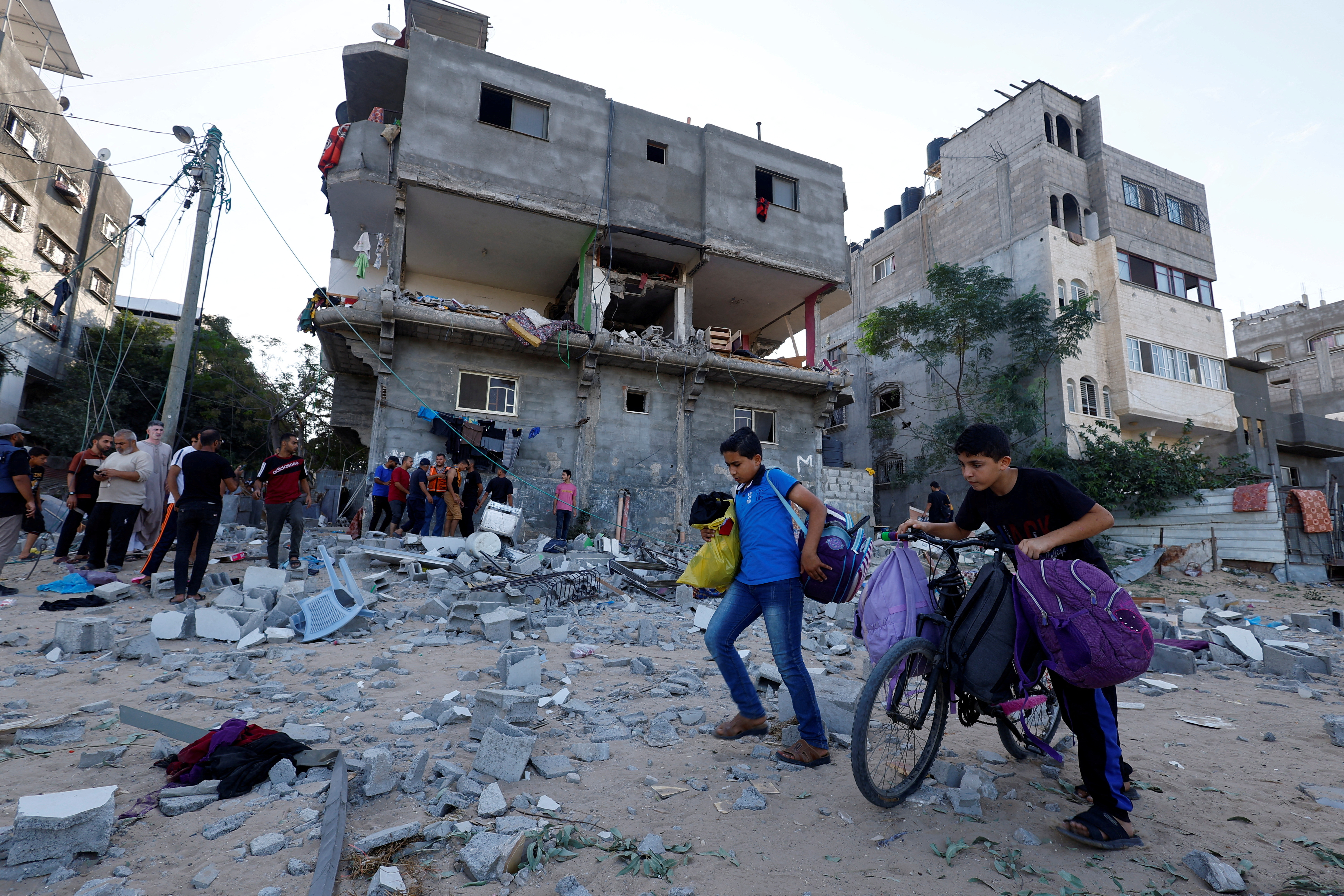
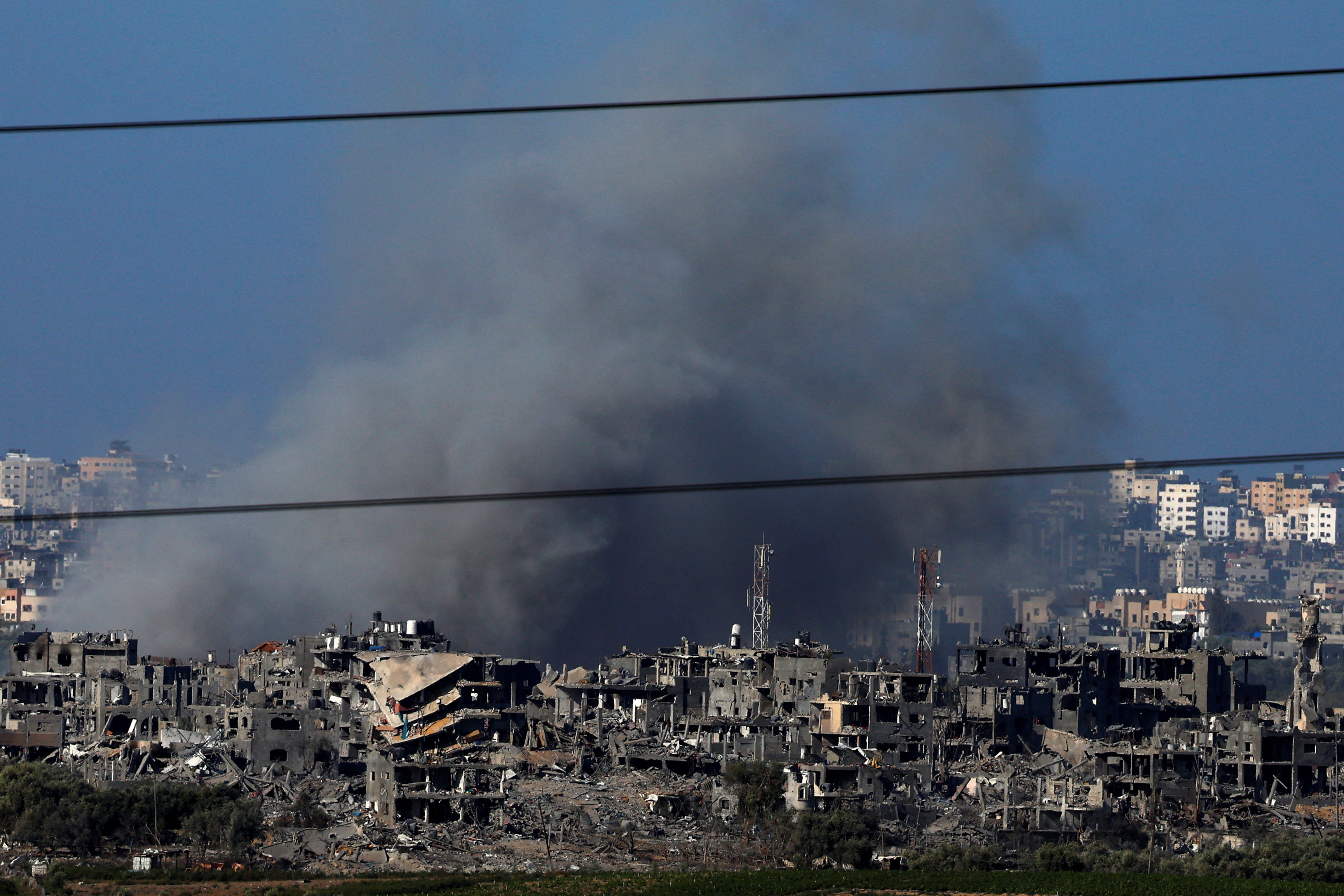
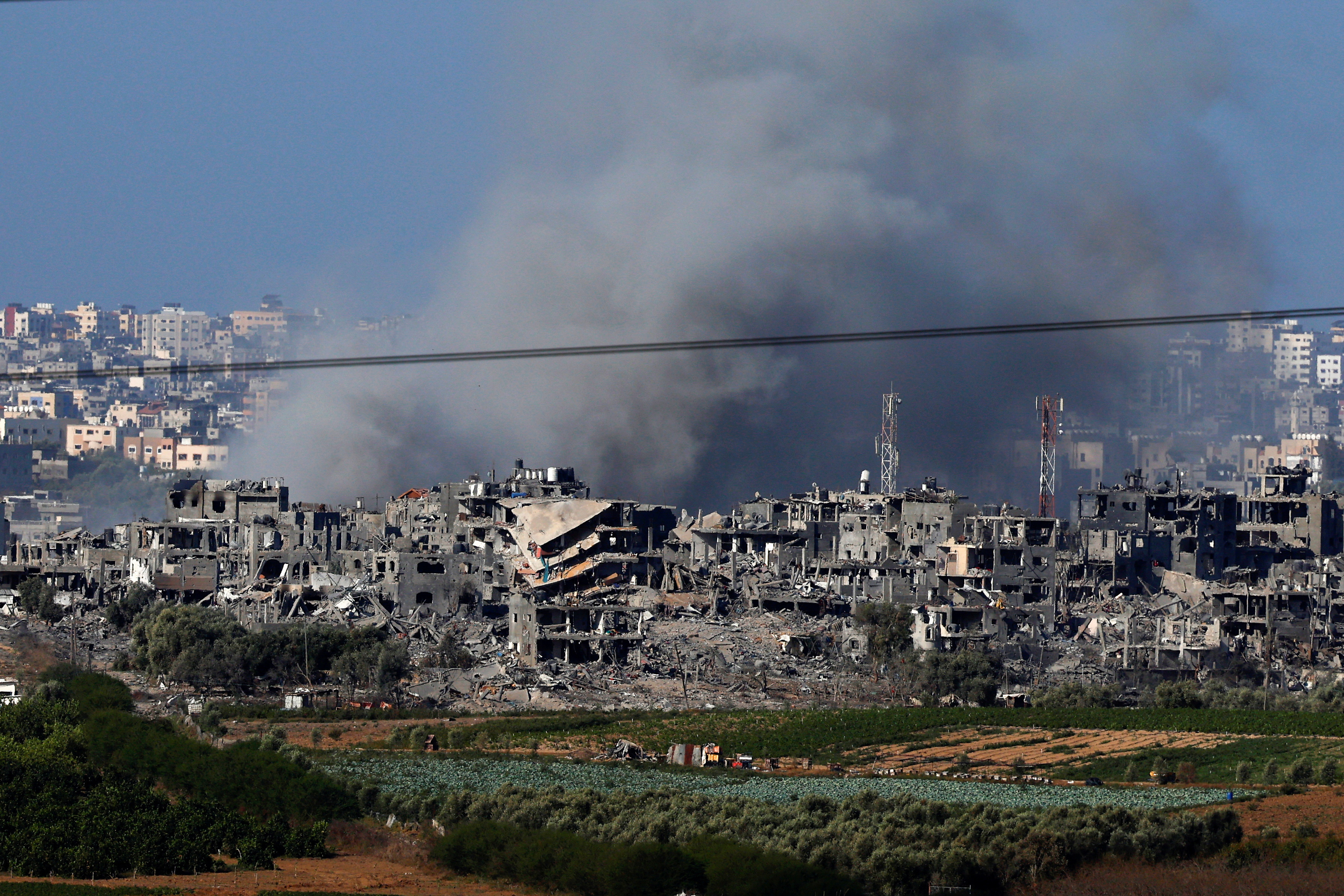

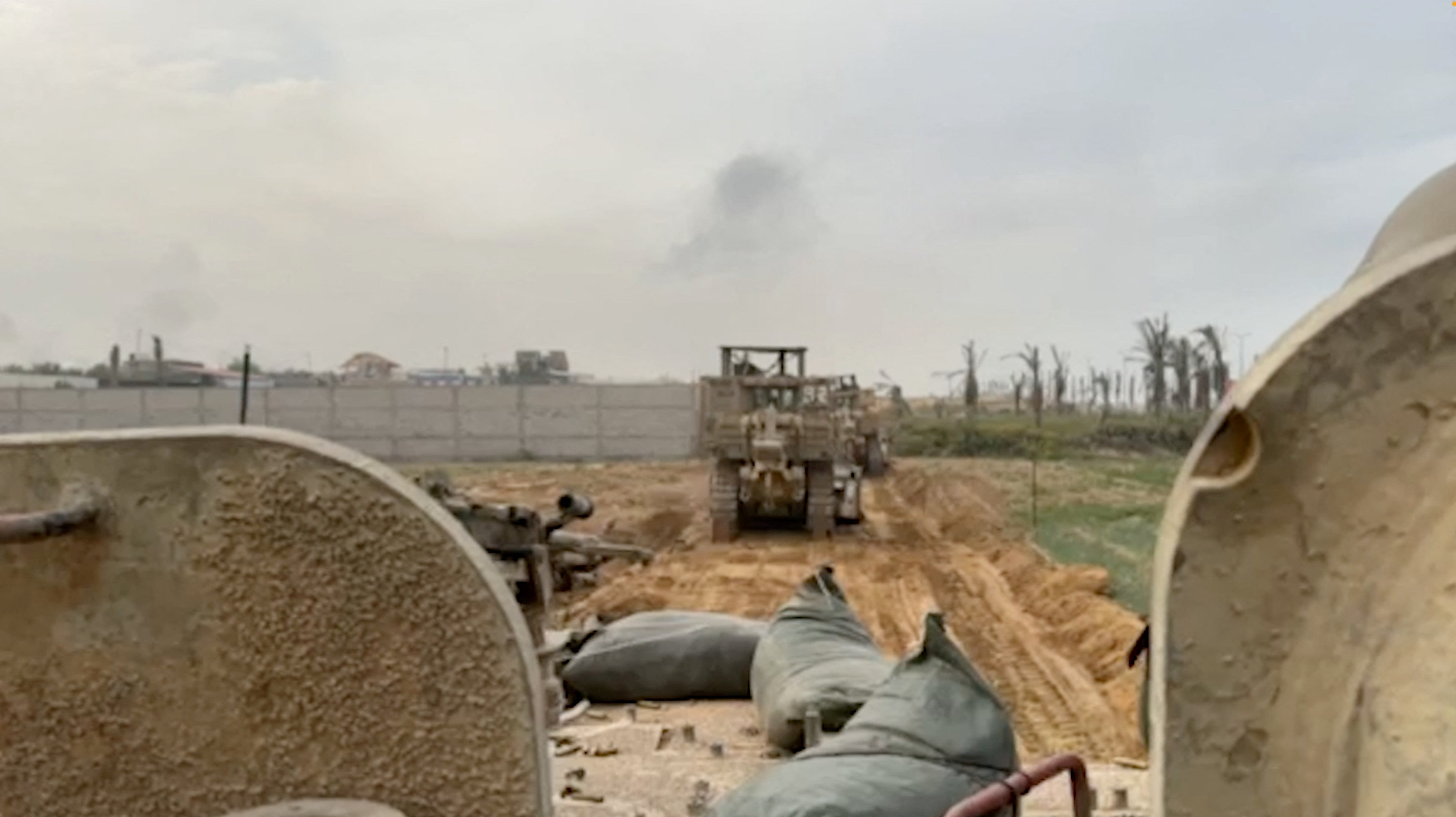
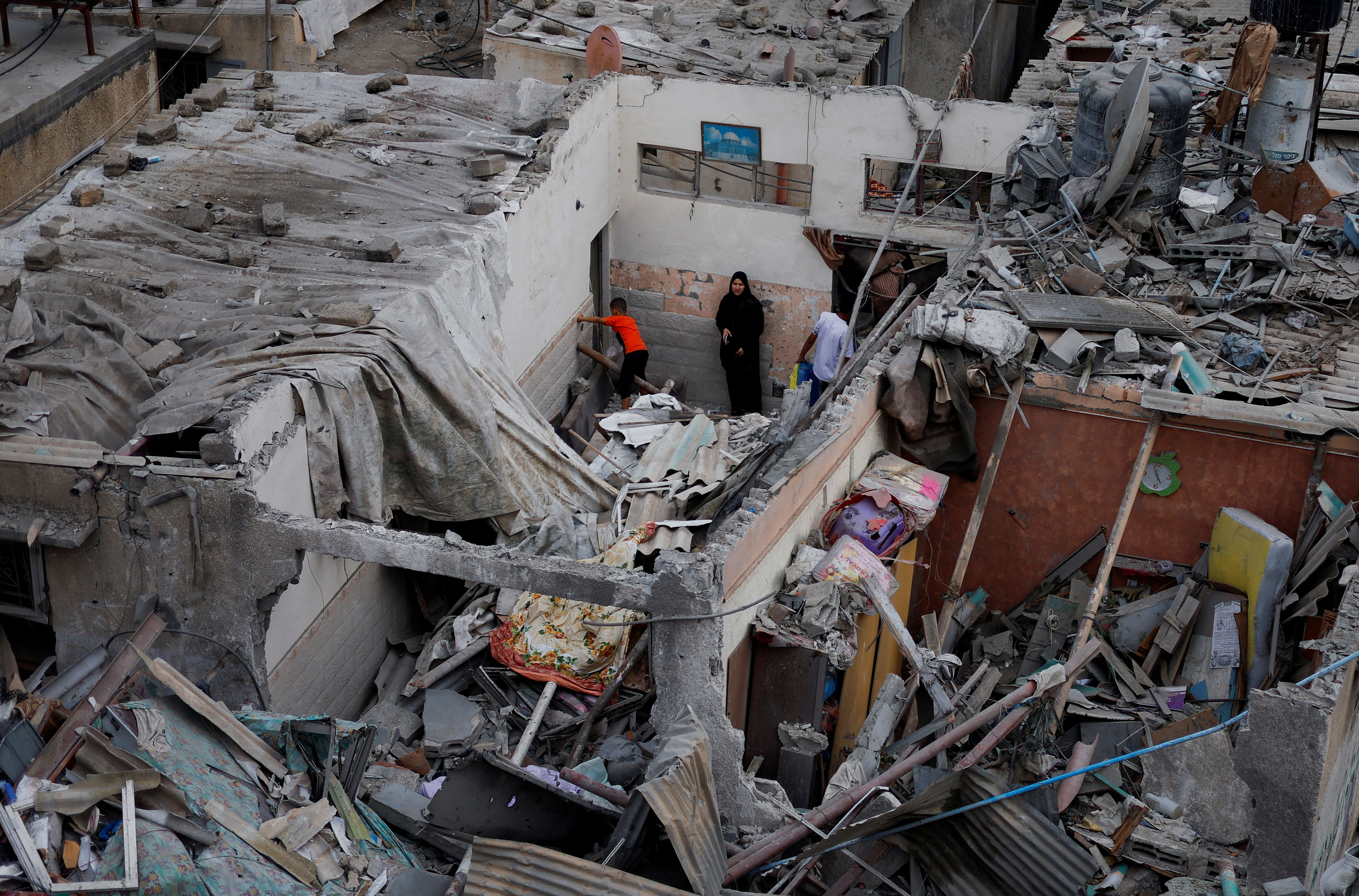

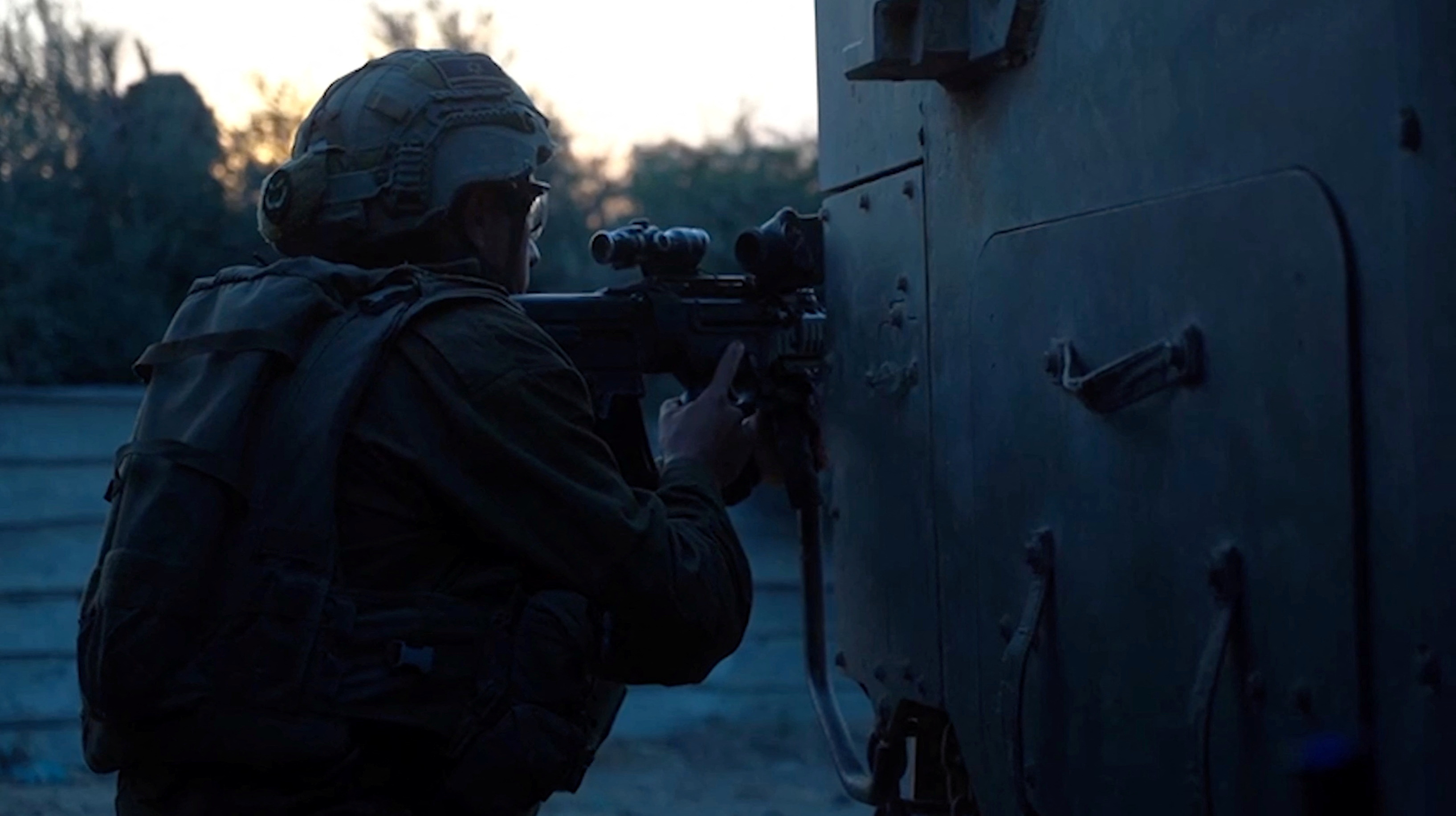
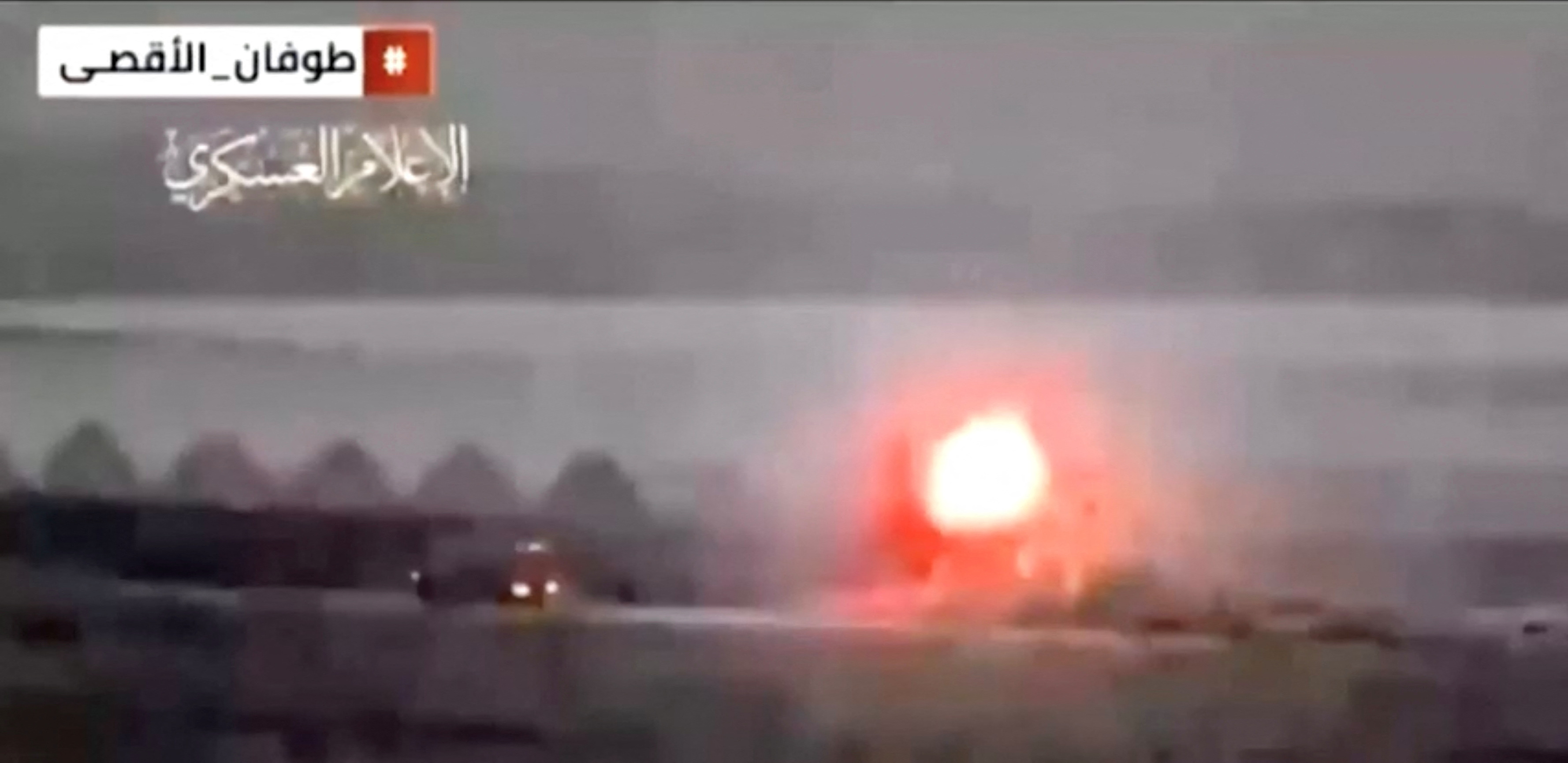
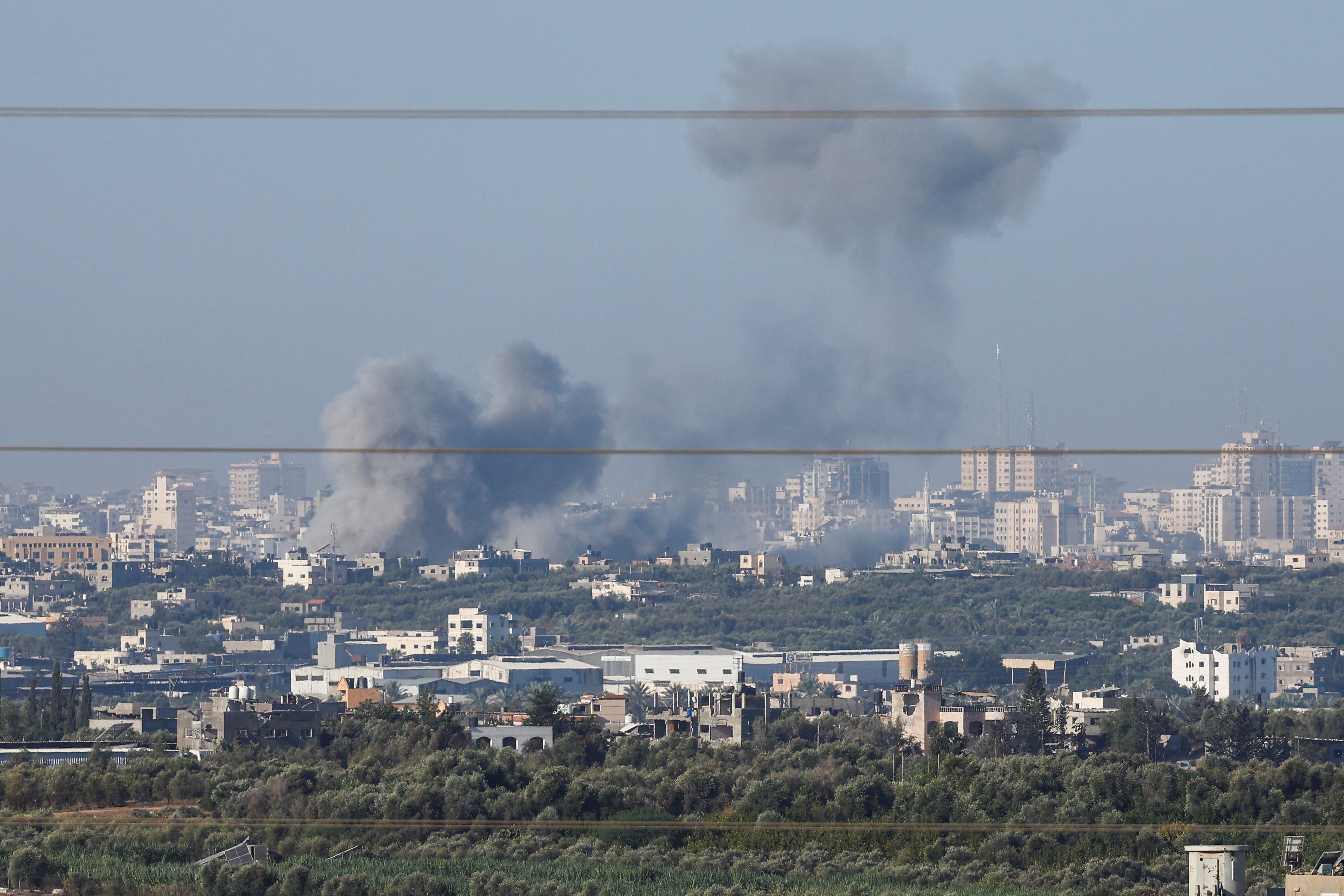
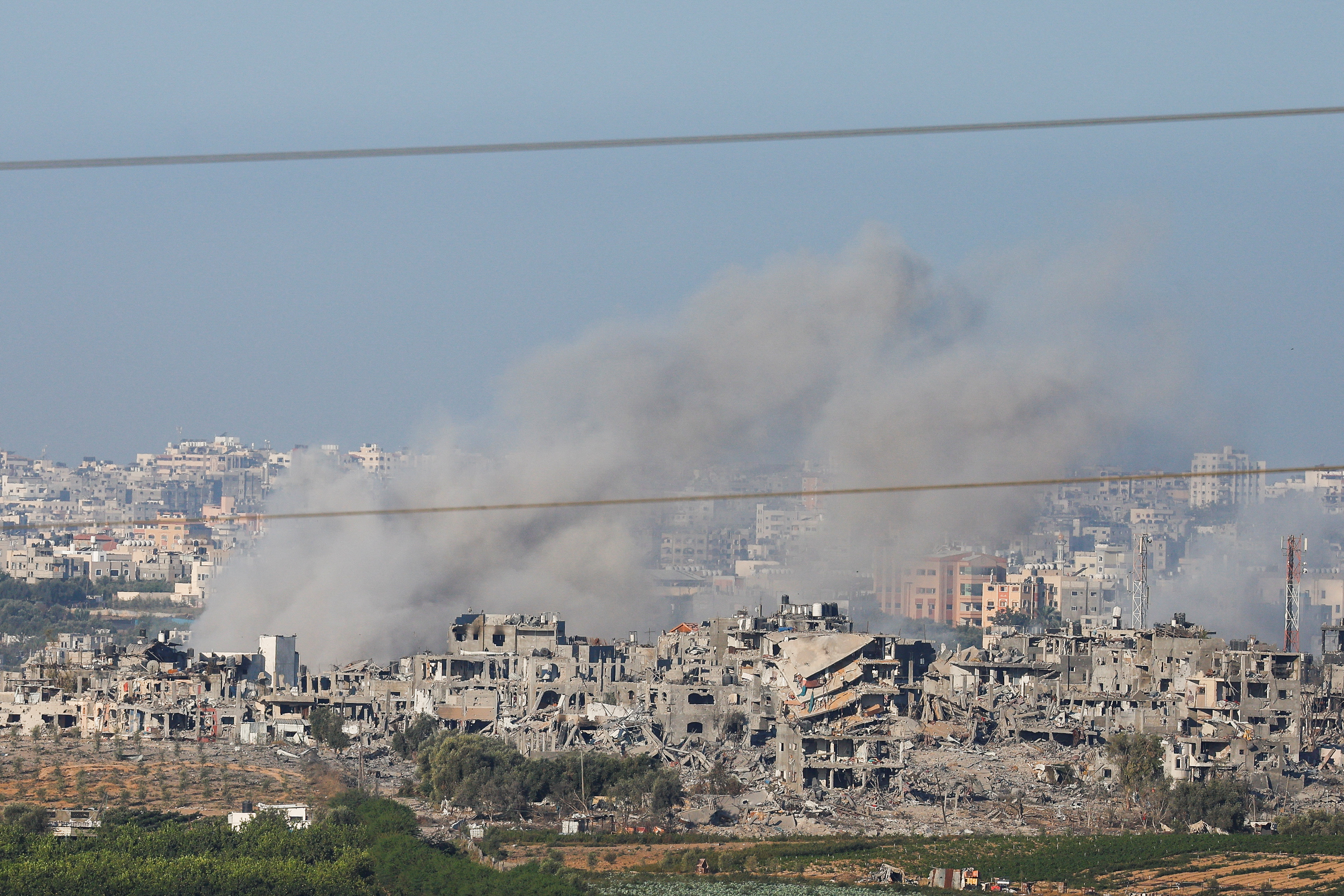
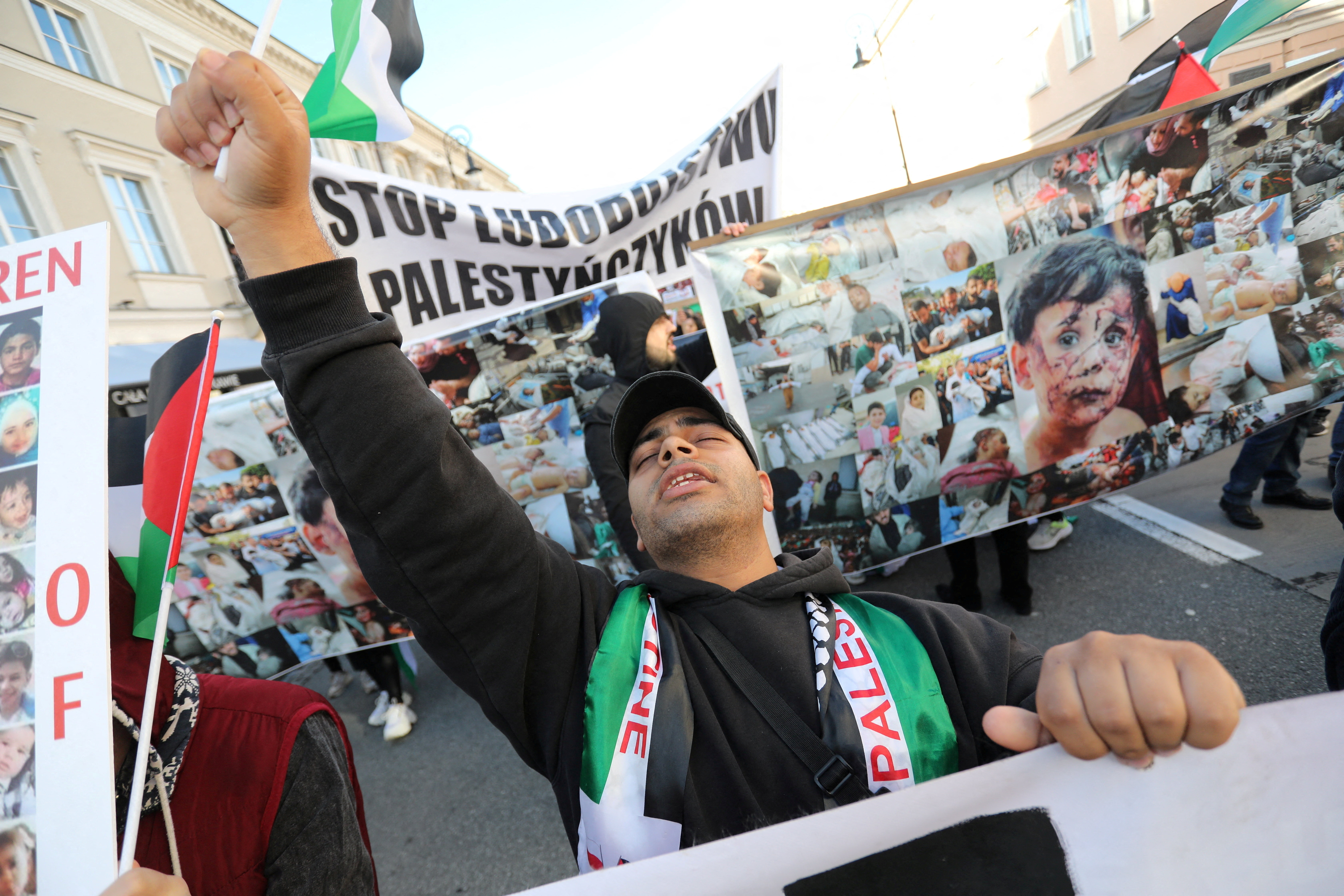
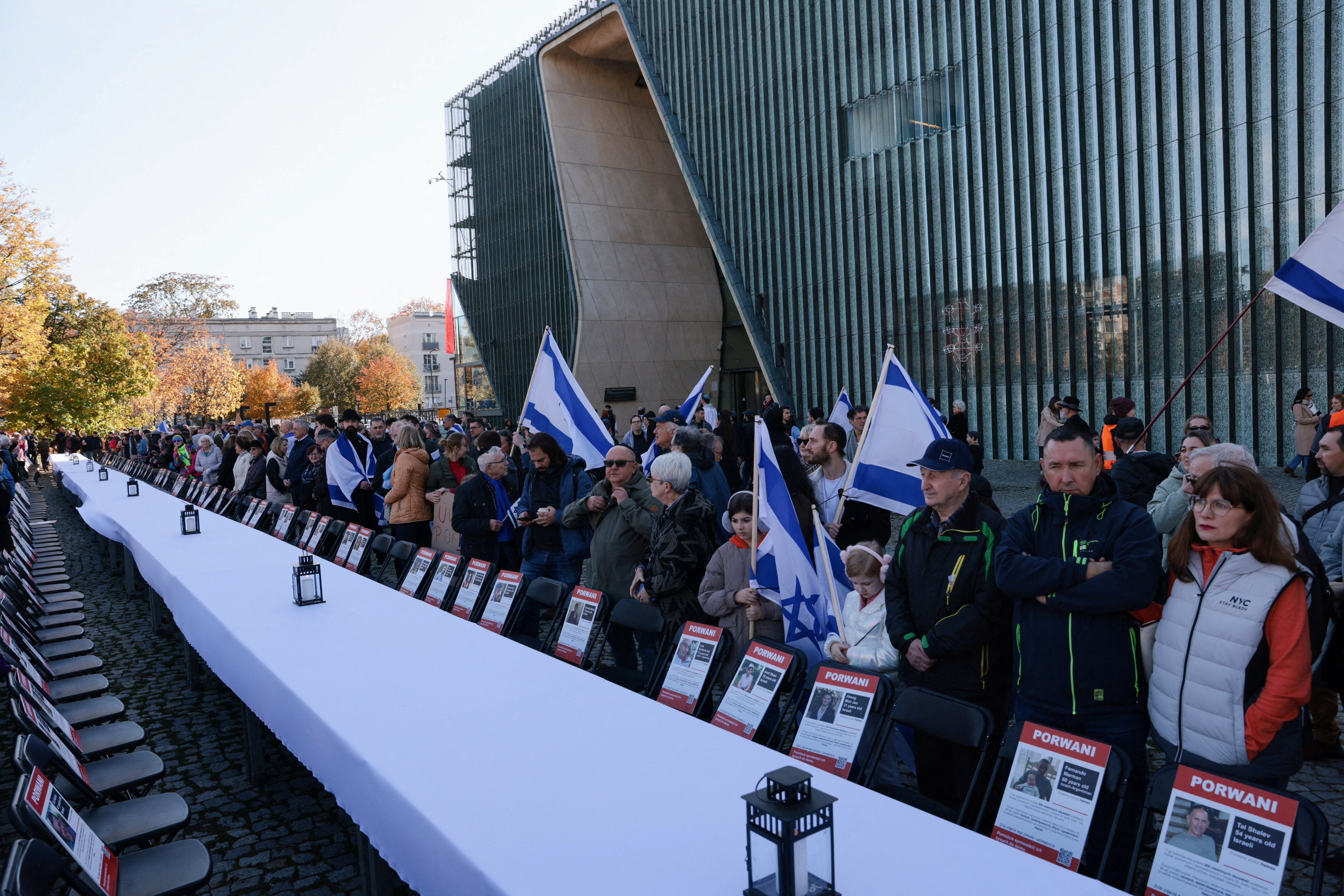
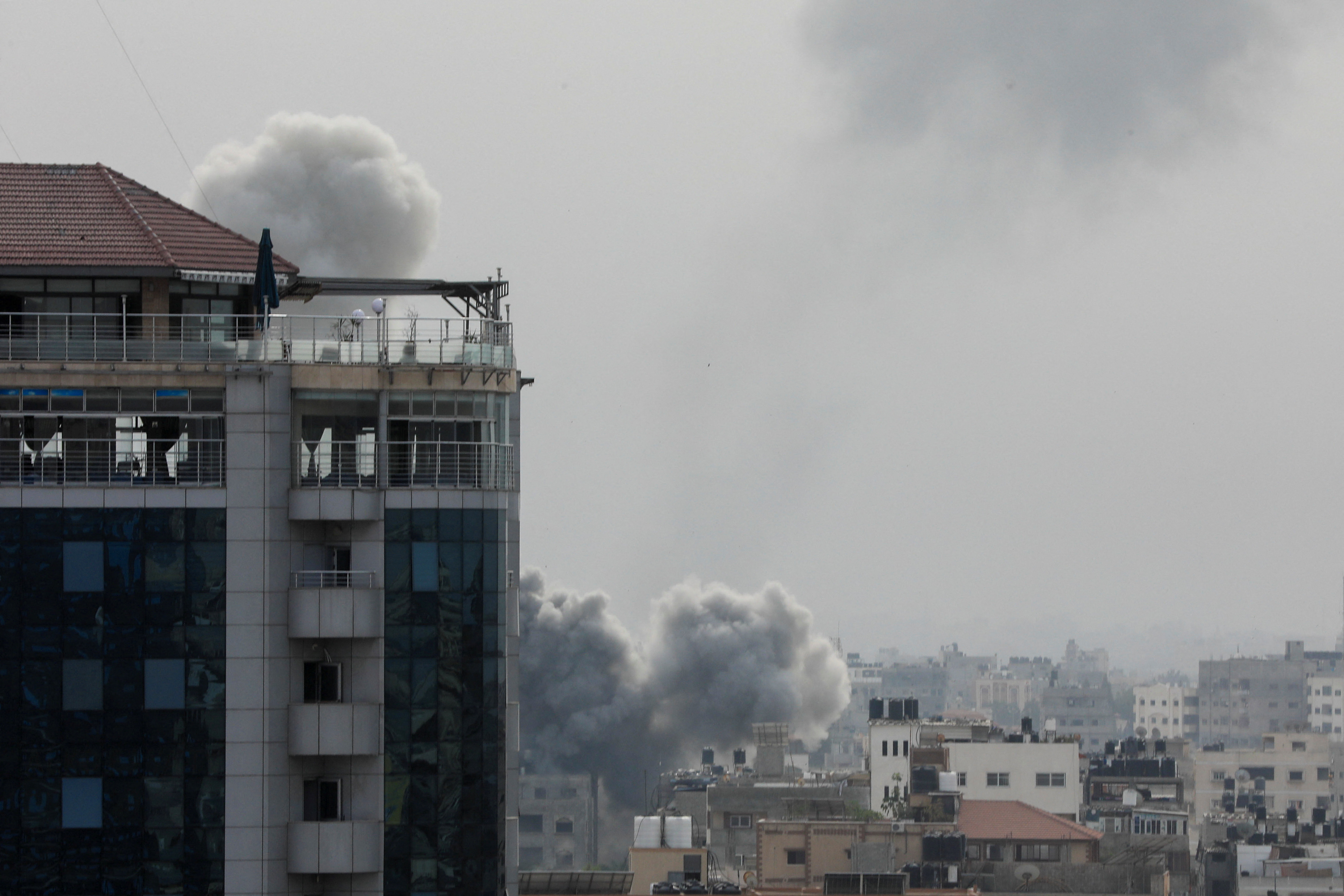
The post Israeli forces attack north Gaza“s main city from two directions first appeared on The News And Times – thenewsandtimes.com.
But who was Sidney Reilly and what were the forces that drove him? To lovers, friends and enemies alike, Reilly remained a mystery. In spite of the many books that have been written about him, often themselves making contrary claims, major questions still remain unanswered about his true identity, place of birth and the precise facts surrounding his disappearance and death. During his life Reilly laid an almost impenetrable fog of mystery and deception around his origins as he adopted and shed one identity after another. Those who entered this ruthlessly compartmentalised life knew only what Reilly himself had told them.
Did it become a tradition of the Russian Intelligence, after the Sidney Reilly – Operation Trust Affair, to send the open, sarcastic “Greeting Cards” to their opponents, like them or Reilly himself sent it, at their connivance, on September 27, 1925 from Moscow to Berlin, to his MI6 Commander Ernest Boyce, informing him that he is allright and in Moscow. The exact facts around this postcard are still quite murky. I was not able to find the origins of this postcard, yet. It looks real, but it could be written by either CheKa, imitating his handwriting, or by Reilly himself. He was arrested very shortly after he mailed this postcard. Note the description of the front of the postcard: Lenin at the founding ceremony of the monument to Karl Marx. The organizing of the shooting at Lenin in 1918 was the main charge against Reilly, and the postcard reminded his MI6 boss about it.
Were the shootings by Robert R. Card one of those “Greeting Cards”?
Was it sent by Putin himself?

But who was Sidney Reilly and what were the forces that drove him? To lovers, friends and enemies alike, Reilly remained a mystery. In spite of the many books that have been written about him, often themselves making contrary claims, major questions still remain unanswered about his true identity, place of birth and the precise facts surrounding his disappearance and death. During his life Reilly laid an almost impenetrable fog of mystery and deception around his origins as he adopted and shed one identity after another. Those who entered this ruthlessly compartmentalised life knew only what Reilly himself had told them.
Did it become a tradition of the Russian Intelligence, after the Sidney Reilly – Operation Trust Affair, to send the open, sarcastic “Greeting Cards” to their opponents, like them or Reilly himself sent it, at their connivance, on September 27, 1925 from Moscow to Berlin, to his MI6 Commander Ernest Boyce, informing him that he is allright and in Moscow. The exact facts around this postcard are still quite murky. I was not able to find the origins of this postcard, yet. It looks real, but it could be written by either CheKa, imitating his handwriting, or by Reilly himself. He was arrested very shortly after he mailed this postcard. Note the description of the front of the postcard: Lenin at the founding ceremony of the monument to Karl Marx. The organizing of the shooting at Lenin in 1918 was the main charge against Reilly, and the postcard reminded his MI6 boss about it.
Were the shootings by Robert R. Card one of those “Greeting Cards”?
Was it sent by Putin himself?

The post Did it become a tradition of the Russian Intelligence, after the Sidney Reilly – Operation Trust Affair, to send the open, sarcastic “Greeting Cards” to their opponents? Were the shootings by Robert R. Card one of those “Greeting Cards”? Was it sent by Putin himself? first appeared on The News And Times – thenewsandtimes.com.

It was a warm, humid afternoon, typical of Moscow in August, and children were playing in the street below. Apartment No 66 was on the top floor and the television crew were using the small lift to shuttle their equipment up in relays. Boris Gudz sat patiently in the corner of the study as cameramen and sound technicians set up around him. Although clearly a man of advancing years, there was little in his outward appearance to betray the fact that two weeks previously he had celebrated his 100th birthday. On his blazer lapel, appropriately, hung the Order of Artuzov. Artur Artuzov was the Ogpu mastermind credited with conceiving Operation Trust, the subject of the afternoon’s interview for Russian television.
A counter-intelligence coup of epic proportions, the 1925 Trust operation succeeded in luring back to Russia the man Ogpu – the Soviet military intelligence service – ranked as one of its greatest and most formidable enemies, the British “master spy” Sidney Reilly.
When the equipment was finally ready and the interview began, Gudz explained that he had been born in the Kherson district, the same district as the Russian-born Reilly. After his father was arrested for revolutionary activity, he joined Lenin’s Bolshevik party and eventually took part in the 1917 revolution and the civil war that followed. Artuzov, head of Ogpu’s counter-intelligence section, was a family friend and had offered Gudz a job as liaison officer to his subordinate, Vladimir Styrne. Gudz’s initial role in the Trust deception was as a courier delivering messages and money to Eduard Opperput, one of the front-line agents engaged in apprehending Reilly.
Like many others in the west, Reilly was convinced that the Trust was an anti-Bolshevik group and believed Opperput to be one of its representatives. It was at Opperput’s “safe-house” apartment on September 26 1925 that Reilly wrote a postcard to the MI6 station chief Ernest Boyce. Gudz recalled that after leaving the building and posting the card, Reilly got into a car he thought was taking him to the railway station. Instead, handcuffs were snapped on his wrists and the car sped off to the notorious Lubyanka headquarters of Ogpu.
Reilly’s incarceration in cell 73 was kept a closely guarded secret, even from other Ogpu personnel. According to Gudz, “The cell was more like a room of a good hotel: there was a sofa, an armchair and a table in it.” Concern that Reilly might attempt suicide is evident from a conversation Gudz recalled with the jailer, who told him that day and night observation was being kept on Prisoner 73, “so that he won’t lay hands on himself”.
The interrogation, led by Styrne, began the day after Reilly’s arrest. From the very start, Styrne’s approach was one of respect for someone he considered a worthy adversary. Although it was made clear to Reilly that he was still under sentence of death for his part in the attempted coup against Lenin in 1918, Gudz was keen to emphasise that at no point during interrogation was torture used – “no physical methods were applied to him. I can guarantee that”.
Reilly made several statements to Styrne about his background, but would not be drawn on any of the matters Ogpu most wanted to know about, principally MI6 operational details. Although “physical methods” of torture were not employed, there is strong evidence in the Ogpu’s records to suggest that psychological torture certainly was.
While in cell 73, Reilly kept a diary of sorts, making tiny, handwritten notes on cigarette papers. These he hid in his clothing, his bed and in cracks in the plaster walls. On October 30 1925 he recorded that Styrne had told him that, “unless I agree to co-operate [my] execution will take place immediately”. On his refusal, Styrne called in the executioner. Reilly was handcuffed and taken out to be shot, or so he thought. After “an endless wait” in the courtyard, he was brought back in and told that a stay of execution had been granted for a further 20 hours.
According to Ogpu observation reports, Reilly spent that night alternately crying and praying before a small picture of his wife Pepita. It seemed that the classic mock execution technique had finally shaken his resolve. Despite his agreement to provide, “full evidence and information… relating to the organisation and personnel of the British intelligence service,” subsequent interrogation reports indicate that the details he gave Styrne were either of a low-grade nature (much of which they already knew) or were completely bogus. On being asked, for example, who the new head of MI6 was, he gave a fictitious name – Rear Admiral Gaygout – instead of naming Rear Admiral Sinclair.
According to Gudz, Reilly was regularly taken from the Lubyanka after dark and driven to the Sokolniki district for walks in the woods. As a “secret” prisoner, great care had to be taken to conceal his movements: Reilly was always dressed in an Ogpu uniform for the trips.
By November 4 it was decided that Reilly had no more to tell. Stalin, who Gudz says was kept fully informed throughout, believed that the longer Reilly remained alive the greater the chance that word of his incarceration would leak out. Once this happened, diplomatic scandals and intrigues would surely follow. According to Gudz, Stalin, “anticipated this situation and ordered his execution”. Although the decision to carry out the execution was an irreversible one made at the highest level, it would seem that the Ogpu officers on the ground did, in fact, exercise a degree of discretion in how it was done, deciding to shoot Reilly unawares on his next walk in Sokolniki on the evening of November 5.
“However paradoxical it may sound,” said Gudz, “it was a humanitarian act. Reilly had been taken on those trips many times before, and this, his last trip, was just another in his eyes.” With Reilly in the car that evening were the driver, Ibrahim Abisalov, Grigory Feduleev and Grigory Syroezhkin. Prior to leaving the Lubyanka, it had been agreed that the driver would stop the car at an appointed spot just beyond the pond on the narrow Bogorodsk road. When Reilly was 30 to 40 paces from the car he was shot in the back by Abisalov.
It should be noted with some historical irony that Artuzov, Styrne and indeed most of those involved in Reilly’s apprehension and death would eventually find themselves in front of Ogpu firing squads, as victims of Stalin’s purges. Gudz and his friend Abisalov were more fortunate. As relatively junior officers they were merely sacked from the organisation and quickly melted into civilian life. Gudz, who soon found himself a job as a bus driver, ultimately survived not only the purges and the second world war, but the demise of the Soviet Union whose birth he had witnessed.
· On His Majesty’s Secret Service – Sidney Reilly, Codename ST1 by Andrew Cook is published by Tempus, £14.99
The post To trap a spy first appeared on The News And Times – thenewsandtimes.com.